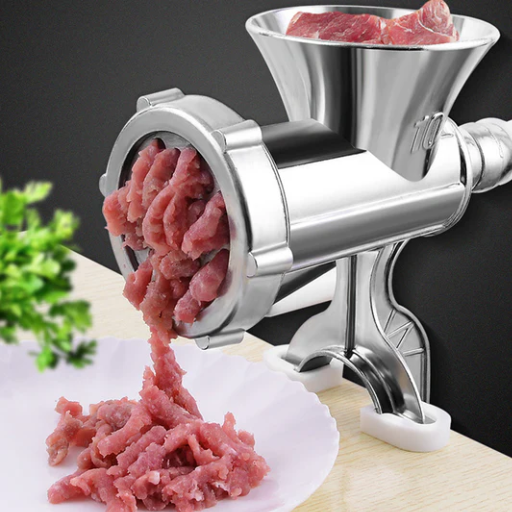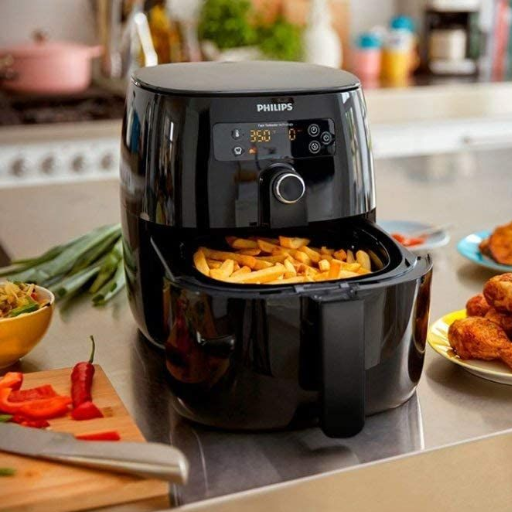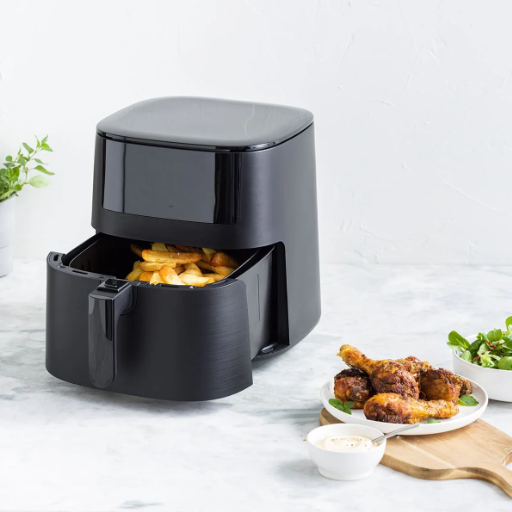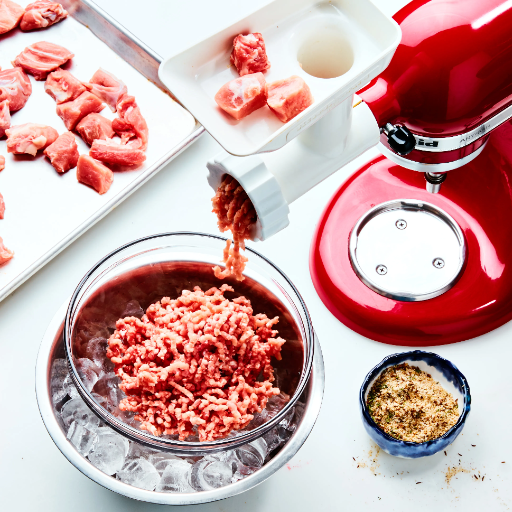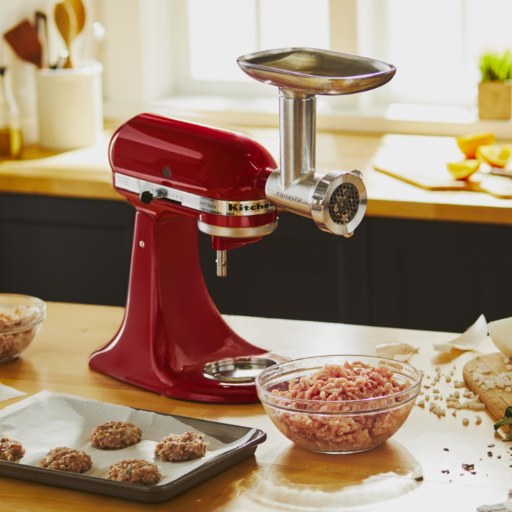When it comes to creating a memorable dining experience, every detail matters—from the menu offerings to the ambiance of the space. However, one element that often goes unnoticed but plays a pivotal role in elevating a restaurant’s image is its dinnerware. Fine china dinnerware is more than just a functional piece; it’s a statement of sophistication, durability, and attention to detail.
This blog post will explore how fine china dinnerware can enhance the dining experience for your guests while reinforcing your restaurant’s brand identity. We’ll discuss the benefits of using wholesale fine china, its unmatched aesthetic and durability, and how it can add value to your establishment. Whether you run an upscale eatery or a cozy bistro, discover how this elegant choice can leave a lasting impression on your patrons.
What types of wholesale chinaware are available for restaurants?

Restaurants can choose from a variety of wholesale chinaware types to suit their unique needs and aesthetic preferences. Common options include bone china, prized for its lightweight elegance and translucency, and porcelain, known for its durability and resistance to chipping. Stoneware offers a more rustic and robust appeal, making it ideal for casual or eclectic dining settings. Additionally, vitrified china combines strength and sleek design, perfect for high-volume establishments. These options are available in a range of styles, finishes, and patterns, allowing restaurants to easily find chinaware that complements their brand identity and enhances the dining experience.
Exploring porcelain dinnerware options
Porcelain dinnerware is celebrated for its exceptional elegance and versatility. Crafted from fine-particle clay and fired at high temperatures, porcelain offers a non-porous surface, making it resistant to staining and suitable for both casual and formal dining. Lightweight yet remarkably durable, it is ideal for restaurants seeking a refined appearance without compromising on practicality. Porcelain’s ability to be styled in various designs—ranging from minimalist to ornate—ensures it complements a wide array of themes and table settings.
When selecting porcelain dinnerware, consider its grade and intended use. Fine porcelain provides a luxurious, translucent finish, while hotel porcelain is specially engineered for enhanced durability in high-traffic environments. Many options are also microwave- and dishwasher-safe, making them adaptable for modern foodservice operations. With its balance of sophistication and functionality, porcelain continues to be a top choice for both high-end and casual dining establishments looking to elevate their presentation.
Understanding bone china and its benefits
Bone china is a premium type of porcelain that is known for its exceptional strength, lightweight feel, and signature creamy translucence. It is made by incorporating bone ash, alongside kaolin and feldspar, into the ceramic composition, which grants it its renowned durability and unique aesthetic quality. One of its primary benefits is its resistance to chipping while maintaining a delicate and refined appearance, making it ideal for luxury dining experiences. Bone china is both microwave- and dishwasher-safe in most cases, combining elegance with practicality. Its timeless appeal, superior craftsmanship, and robust nature make it a preferred choice for upscale dining settings and collectors alike.
Comparing stoneware to other chinaware materials
Stoneware vs. Porcelain
Stoneware and porcelain are two distinct types of chinaware, each with unique characteristics. Stoneware is known for its durability, thicker construction, and rustic appeal, making it perfect for everyday use or casual dining. Porcelain, on the other hand, has a finer, more delicate structure with a translucent appearance, often preferred for formal settings. While stoneware is less prone to chipping and better at retaining heat, porcelain is typically more lightweight and resistant to water absorption due to its denser clay composition.
Stoneware vs. Earthenware
Compared to earthenware, stoneware is significantly more durable and less porous, making it suitable for both casual and semi-formal settings. Earthenware, often associated with its artisanal look and affordability, has a more porous surface, which requires glazing to resist water. Stoneware can withstand higher firing temperatures, resulting in a sturdier material with a smoother finish, while earthenware remains slightly more fragile and ideal for decorative purposes.
Stoneware vs. Bone China
When comparing stoneware to bone china, one of the biggest distinctions lies in their composition and aesthetic. Bone china is crafted to be lightweight, bright, and delicate, with a distinctive translucent quality, often making it synonymous with luxury and elegance. Stoneware, in contrast, boasts a more robust construction and a more muted, earthy finish. Although both materials can be used in casual or formal settings, stoneware’s durability makes it a practical choice for everyday dining, while bone china is often reserved for special occasions.
Each material has its own strengths, allowing customers to select chinaware based on their specific needs, preferences, and intended usage.
How to choose the right wholesale dinnerware for your restaurant?

When selecting the right wholesale dinnerware for your restaurant, consider the style, durability, and functionality that align with your establishment’s needs. For a fine dining setting, elegant bone china or porcelain may convey sophistication, while robust stoneware or melamine is ideal for high-traffic, casual venues. Evaluate the type of cuisine you serve—certain dishes may require specialized plate shapes or sizes. Additionally, consider your budget and the long-term costs of maintenance and replacement. Choosing dinnerware that complements your restaurant’s theme, withstands frequent use, and reflects your brand’s image is key to leaving a lasting impression on your guests.
Balancing elegance and durability in chinaware selection
When balancing elegance and durability in chinaware selection, start by assessing the expected usage in your establishment. For fine-dining restaurants, prioritize high-quality porcelain or bone china, as these materials exude sophistication while maintaining resilience. If your focus is more casual or family-oriented, opt for vitrified chinaware or stoneware, which combine aesthetic appeal with strength to endure frequent handling. Look for chip-resistant edges and durable glazing to maximize longevity. Additionally, choose styles and designs that align with your restaurant’s concept—neutral tones provide versatility, while textured or patterned options can elevate visual interest. Ultimately, your choice should balance operational needs with your desired guest experience, delivering a combination of practicality and elegance.
Considering different plate and bowl sizes for various dishes
When selecting plate and bowl sizes, it’s essential to match the dish type and portion size to the appropriate serveware to enhance presentation and functionality. For appetizers and side dishes, smaller plates and bowls provide a more refined and proportional appearance. Main courses often require larger plates, typically 10-12 inches, offering ample space for creative plating while preventing overcrowding. Bowls come in various depths, with shallow bowls suited for pastas and salads, and deeper options ideal for soups or stews. Additionally, matching bowl capacities to the volume of liquids or ingredients ensures practicality and reduces waste. The right sizing not only complements the dish but also plays a role in portion control and customer satisfaction, aligning visual appeal with efficient service.
Matching dinnerware to your restaurant’s theme and cuisine
Choosing dinnerware that aligns with your aesthetic and cuisine helps improve the experience and compliments your restaurant. Begin by looking into the theme and environment of the restaurant. For example, rustic themed places may benefit from earthy tones while notloshe places may prefer monotone designs. In addition, the type of cuisine served should also affect the choice. Traditional courses may require classic manner like white fine dining porcelain whereas more relaxed eateries can be more experimental with vibrant colors.
Additonally, think about the practicality of the dinnerware: the ease and durability of cleaning the pieces is important in high volume service. Melamine and tempered glass may be better suited for busy places while maintaining stylish appeal. In the end, the choice of dinnerware should accent the identity of the restaurant while maintaining functionality.
What are the advantages of buying chinaware wholesale?

Buying chinaware wholesale offers several key advantages. Firstly, it is cost-effective, allowing businesses to save significantly by purchasing in bulk at discounted rates. Secondly, it ensures consistency in design and quality, which is crucial for maintaining a cohesive look across a dining establishment. Additionally, wholesale purchasing often includes a broader selection of styles and sizes, enabling businesses to find options that align perfectly with their brand. Lastly, it helps build a reliable inventory, reducing the risk of shortages and ensuring smooth operations during peak times.
Cost savings and bulk purchasing benefits
Cost savings and bulk purchasing offer significant advantages for businesses in various sectors. By buying in bulk, companies often unlock lower per-unit costs, reducing overall expenditures and improving profit margins. Wholesale pricing frequently includes discounts that are not available for individual purchases, allowing organizations to stretch their budgets further. Furthermore, bulk purchasing minimizes the frequency of reordering, saving valuable time and administrative effort. This approach contributes to stable inventory levels, reducing the risks of shortages and avoiding disruptions in supply chains. For businesses in the hospitality and retail industries, consistency in quality and design across bulk orders strengthens branding while ensuring customer satisfaction. Ultimately, these benefits make bulk purchasing a cost-effective and practical strategy for long-term operational efficiency.
Access to a wider variety of styles and patterns
When purchasing in bulk, businesses gain access to an extensive selection of styles and patterns that cater to diverse preferences and branding needs. Suppliers often provide comprehensive catalogs featuring the latest designs, ensuring options that align with both current trends and timeless aesthetics. This variety allows for customization, helping businesses differentiate their offerings and appeal to targeted audiences. Furthermore, bulk purchasing often includes opportunities to mix and match patterns, offering versatility without compromising on cost-effectiveness.
Ensuring consistent tableware for large-scale operations
Consistency in tableware is essential for maintaining a professional and cohesive presentation, particularly in large-scale operations such as restaurants, catering services, or banquet halls. To achieve this, it is crucial to partner with reliable suppliers who can guarantee the availability of matching stock over time. Selecting tableware made from durable materials ensures longevity and reduces the need for frequent replacements, saving costs in the long run. Additionally, maintaining an organized inventory system helps track quantities and avoid mismatches during service. Periodically reviewing the supply chain and establishing reordering schedules can further ensure consistency, allowing businesses to focus on delivering exceptional experiences to their customers.
Are there alternatives to traditional chinaware for restaurants?

Yes, there are several alternatives to traditional chinaware for restaurants that offer both functionality and style. Materials such as melamine, tempered glass, and stoneware provide durable and cost-effective options while being visually appealing. Bamboo and wooden plates are eco-friendly alternatives ideal for establishments prioritizing sustainability. Additionally, high-quality stainless steel or enamelware can bring a rustic or modern aesthetic, depending on the restaurant’s theme. These options cater to diverse dining experiences while maintaining practicality.
Exploring melamine dinnerware for casual dining
Melamine dinnerware is a popular choice for casual dining due to its lightweight, durability, and versatility. This material is made from an organic compound hardened into a sturdy resin, making it resistant to breakage and chipping, which is essential for busy dining environments. Melamine plates and bowls often mimic the appearance of ceramic or porcelain but are far more cost-effective, providing an elegant aesthetic without sacrificing practicality. Additionally, melamine is easy to clean, dishwasher-safe, and available in a wide range of designs, colors, and patterns to suit various restaurant themes. However, it is not suitable for use in microwaves or ovens due to its sensitivity to high heat. Overall, melamine dinnerware offers a reliable, stylish, and budget-friendly solution for casual dining establishments aiming to leave a lasting impression on their patrons.
Considering glass dinnerware for a modern look
Glass dinnerware is an excellent choice for achieving a sleek and modern aesthetic in any dining setting. Its transparent, polished appearance exudes sophistication and versatility, making it suitable for both formal and casual occasions. Glass is non-porous, ensuring it is hygienic and resistant to absorbing odors or stains. Furthermore, it’s often dishwasher-safe and available in a variety of designs, ranging from minimalist styles to intricate patterns. However, while tempered glass options offer improved durability, standard glass dinnerware can be prone to chipping or breaking under heavy use. It’s also important to note that glass does not perform well in extreme temperature changes, which can cause cracking. Nonetheless, for establishments looking to elevate their table settings with an elegant and contemporary vibe, glass dinnerware provides a visually stunning and practical option.
Evaluating plastic dinnerware for outdoor events
Plastic dinnerware is a popular choice for outdoor events due to its lightweight, durable, and budget-friendly nature. Unlike glass or ceramic counterparts, plastic options are highly resistant to breaking, making them especially suitable for settings involving children or casual gatherings. They are available in a range of styles, from disposable plates for convenience to reusable, high-quality options that resemble traditional dinnerware. Modern designs often feature BPA-free and recyclable materials, aligning with eco-conscious practices. Additionally, plastic dinnerware is easy to transport and stack, simplifying setup and cleanup. However, it’s important to consider the environmental impact when selecting disposable items, as they contribute to plastic waste unless properly recycled or compostable. For outdoor events, plastic dinnerware strikes a balance between practicality and aesthetic appeal, capable of meeting varying needs while withstanding the challenges of an open-air environment.
How to care for and maintain wholesale restaurant dinnerware?

Proper care and maintenance of wholesale restaurant dinnerware ensure its longevity and continued quality. Start by washing all pieces immediately after use to prevent stains and residue buildup. Use non-abrasive cleaning tools and mild detergents to avoid surface damage. For high-quality porcelain or ceramic items, avoid sudden temperature changes that can cause cracking. Ensure proper storage by organizing dinnerware with protective layers, such as soft liners, to prevent scratching. Regularly inspect for chips or cracks, replacing damaged pieces promptly to maintain safety and presentation standards.
Proper cleaning and storage techniques for chinaware
Cleaning and storing chinaware correctly contributes towards its lasting beauty and preservation. To maintain the appearance of chinaware, wash them under running warm water using a gentle sponge along with mild soap as a form of cleaning. It is tight not to use abrasive cleaners as these tend to scratch delicate surfaces or provide scrubbing pads which ultimately wreck glaze or decoration. For stubborn stains, a mixture of baking soda and water can be applied gently. Furthermore, do not subject your chinaware to drastic changes in temperature, like putting hot items into cold water, as this may result in cracking or crazing.
When storing chinaware, stack chinas using approached padding in all the spaces around china to prevent damage. Store cups or bowls in facing down positions when possible to minimize dust exposure, and do not overfill cabinets to minimize the chance of unintentional damage. For extended periods of non use, store items in air tight containers to protect against moisture and dust. These tips can effectively help you to retain your chinaware items for centuries.
Extending the lifespan of your dinnerware investment
For protective usage of your dinnerware, proper care is very important. Never use anything abrasive over the surface, including soap. Soaps that are mild should be used along with sponges that are soft. If there are any stubborn marks, baking soda or white vinegar should be mixed with warm water and the items should be soaked in it.
For dishwashing, a gentle cycle is recommended along with emptying slots without crowding. For antique and precious dinnerware pieces, hand washing should be done in order to avoid harsh products and strong water streams. Thermal shock can be avoided by not using the microwave or the oven unless the dinnerware states it is safe.
Proper storage is as vital as cleaning. Place separator pads like cork or felt liners between stacked plates and bowls to avoid any scratching. Store fine or fragile items in padded containers for long-term storage. These items should be kept in climate-controlled locations to mitigate exposure to excessive humidity or heat.
References
Frequently Asked Questions (FAQ)
Q: What are the benefits of using fine china dinnerware in a restaurant setting?
A: Fine china dinnerware offers elegance and sophistication, enhancing the dining experience. It is also durable and chip-resistant, making it ideal for high-traffic environments like restaurants.
Q: How can stoneware dinnerware enhance a restaurant’s presentation?
A: Stoneware dinnerware provides a rustic and artisanal look, adding charm and warmth to the dining presentation. Its unique textures and colors can complement a variety of culinary styles.
Q: What is the difference between porcelain and bone china dinner plates?
A: Porcelain plates are made from refined clay and are typically more durable, while bone china dinner plates contain bone ash, giving them a delicate, translucent appearance but are still strong.
Q: Are ceramic dinner plates dishwasher safe?
A: Yes, most ceramic dinner plates are dishwasher safe, but it’s always best to check the manufacturer’s guidelines to ensure they maintain their quality over time.
Q: Why should restaurants consider purchasing dinnerware sets from china wholesale suppliers?
A: Purchasing from china wholesale suppliers can significantly reduce costs, especially for bulk pricing or wholesale orders, while offering a wide variety of designs and materials.
Q: What are the advantages of using wholesale porcelain dinnerware in hotels and restaurants?
A: Wholesale porcelain dinnerware is highly durable, resistant to scratches, and offers a classic and elegant look, making it perfect for high-end dining environments.
Q: How can restaurants benefit from factory wholesale dinnerware options?
A: Factory wholesale options allow restaurants to purchase large quantities of dinnerware at lower prices, ensuring consistency in style and quality across all dining settings.
Q: What should be considered when selecting a dinnerware set for a dining room table?
A: Consider the theme and style of the restaurant, durability, ease of cleaning, and whether the dinnerware set complements the cuisine being served.
Q: Is there a difference in quality between wholesale melamine and ceramic dinnerware?
A: Yes, ceramic dinnerware is generally more elegant and durable, suitable for formal settings, while melamine is lightweight and shatterproof, ideal for casual or outdoor dining.
Q: How can restaurants ensure they are choosing the right dinnerware?
A: By considering factors such as material durability, design aesthetics, ease of maintenance, and compatibility with the restaurant’s style and menu offerings, restaurants can select the right dinnerware that meets their needs.

